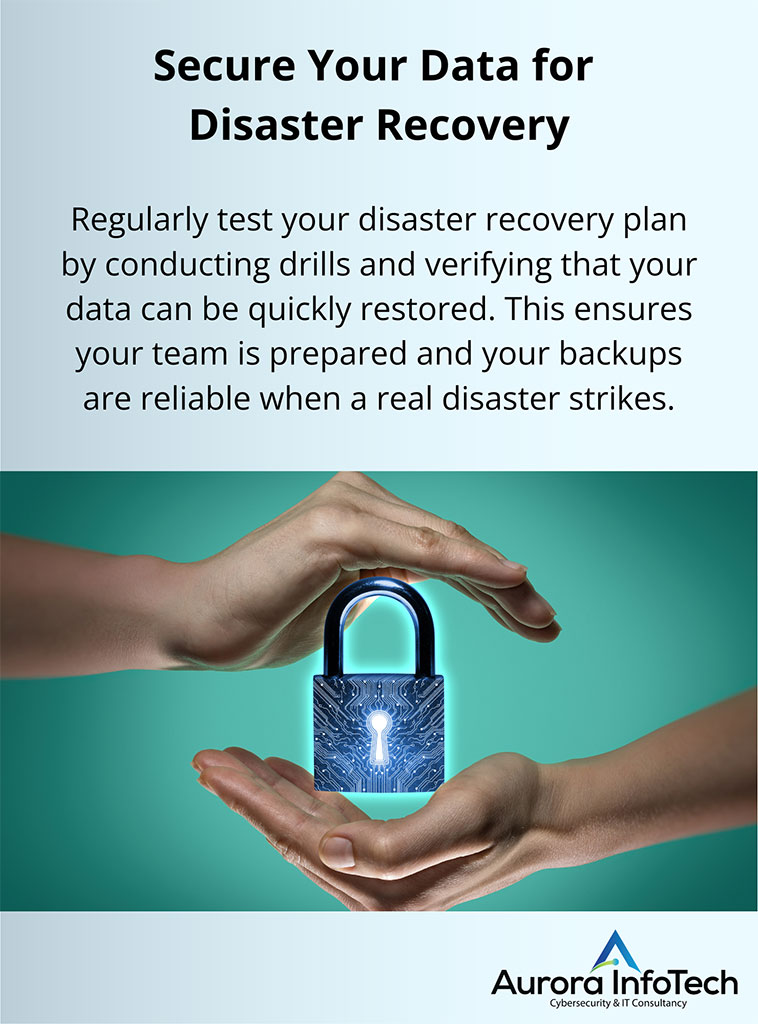 When disaster strikes—whether it’s a hurricane, flood, cyberattack, or another unexpected event—your business’s ability to quickly recover depends on how well you’ve prepared. Below are ten tips to seamlessly incorporate data backup and recovery into your disaster readiness plan, guaranteeing your company’s quick and efficient resurgence.
When disaster strikes—whether it’s a hurricane, flood, cyberattack, or another unexpected event—your business’s ability to quickly recover depends on how well you’ve prepared. Below are ten tips to seamlessly incorporate data backup and recovery into your disaster readiness plan, guaranteeing your company’s quick and efficient resurgence.
- Incorporate Backup into Your Disaster Recovery Plan
- Ensure that data backup is a core component of your disaster recovery plan. Identify critical data and systems that must be prioritized during a disaster recovery scenario and outline the steps for rapid restoration.
- Geographically Distribute Backups
- Store backup copies in different geographic areas to protect against regional disasters like hurricanes or earthquakes. Cloud backups are particularly useful as they can be accessed from anywhere, even if your physical location is compromised.
- Regularly Review and Update Your Plan
- Disaster preparedness is not a one-time effort. Regularly update and review your data backup and recovery plans to reflect changes in your business operations, new threats, and technological advancements.
- Run Disaster Recovery Drills
- Conduct regular disaster recovery drills that include testing your data restoration processes. This helps ensure your team knows how to act quickly and efficiently during a disaster.
- Automate and Schedule Off-Hours Backups
- Set automated backups during off-hours or non-peak times to avoid disruptions and ensure that backups are up-to-date without affecting daily operations, even in the face of an impending disaster.
- Create Backup Redundancy for Critical Systems
- Implement multiple backup solutions (e.g., on-site, cloud, and physical copies) for critical systems and data. This redundancy increases the chances that at least one backup remains accessible in a disaster.
- Ensure Rapid Access to Backup Data
- Design your backup system to access and restore essential data quickly. This is crucial during disasters when every minute counts in restoring operations and minimizing downtime.
- Protect Against Cyber Threats
- Cybercriminals often exploit vulnerabilities during disasters. To prevent data breaches, ensure that your backups are protected with encryption and strong security measures, even when your primary systems are down.
- Collaborate with Local Authorities and Partners
- Work with local disaster preparedness agencies and partners to align your data backup and recovery efforts with broader community plans. This partnership can offer further assistance and resources in a large-scale emergency.
- Document and Communicate Your Strategy
- Document your data backup and recovery procedures and ensure they are communicated to all stakeholders. Quick access to this information can make a difference between a swift recovery and extended downtime during a disaster.
By integrating these tips into your disaster preparedness strategy, you can enhance your business’s resilience and ensure that essential data is safeguarded and can be restored, no matter what challenges arise. If you need further guidance on implementing these strategies, don’t hesitate to reach out!










